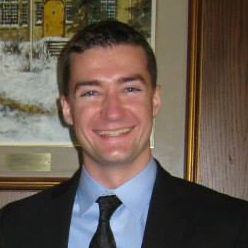The trauma bay is swamped, rooms are a scarce commodity and inpatient beds are in even more dubious supply. You set your coffee down and prepare to go see your newest patient, a 65-year-old male complaining of abdominal pain. Flipping through his chart, you note that he is tachycardic at 113 bpm and febrile with a temperature of 38.1 °C. En route to the patient’s bed, your nursing colleague stops to tell you that the patient looks terrible. Your patient is a portly man of ruddy complexion. His face is flushed and sweat beads his brow. The history is non-contributory and physical exam reveals only epigastric tenderness without peritoneal signs. You add acute pancreatitis to your lengthy differential.
Acute Pancreatitis
Patients with acute pancreatitis fall somewhere on a wide spectrum of severity, with a natural history ranging from benign to deadly. The appropriate disposition for these patients in today’s climate of gridlocked hospital beds is often ambiguous. Recent posts have provided tips on remembering Ranson’s Criteria and the BISAP score. This post takes a broader look at pancreatitis, with discussion of its etiology and pathophysiology, diagnosis, risk stratification, and acute management.
Etiology & Pathophysiology
The mnemonic GET ED can be used to remember some of the common etiologies for pancreatitis. Check out the Boring Cards for the relatively more comprehensive mnemonic, I GET SMASHED.
Gallstones – Gallstones are the most common cause of acute pancreatitis, and are responsible for 33-49% of cases.1 In gallstone pancreatitis, common bile duct obstruction leads to increased intraductal pressure causing retrograde flow of protetolytic digestive enzymes. This backwash leads to auto-digestion of the pancreas triggering an inflammatory response. The prevalence of gallstone pancreatitis increases with age.1
Ethanol – Widely accepted as the second most frequent cause of acute pancreatitis, and the chief culprit behind the majority of chronic pancreatitis cases, alcohol has been implicated in 19-32% of cases of acute pancreatitis.1 The mechanism by which ethanol causes pancreatitis has not yet been clarified, but is thought to be multifactorial. Ethanol-induced pancreatitis has a peak incidence in middle-age.1
Trauma – An infrequent cause of pancreatitis, less than 2% of blunt abdominal injuries precipitate acute pancreatitis.2 Despite this, traumatic pancreatitis should be considered in patients presenting to the ED with abdominal pain and a recent history of blunt abdominal trauma.
Endoscopic retrograde cholangiopancreatography (ERCP) – Pancreatitis is the most common adverse effect of ERCP, and arises in 3.5-5.4% of cases.3 Recent history of ERCP in the context of new abdominal pain should prompt a work up for pancreatitis.
Drugs – Although myriad medications have been implicated in drug-induced pancreatitis, the literature on this matter is sparse. ACE inhibitors, HAART therapy, and valproic acid may be culprits in pancreatitis.4
Diagnosis
The diagnosis of pancreatitis should be made when a patient meets two of the following three criteria:5,6
- Abdominal pain, principally epigastric in nature and commonly radiating to the back.
- Radiographic findings of: pancreatic necrosis, abscesses, or pseudocysts, and peri-pancreatic inflammation or fluid collections. The chief imaging modality is contrast enhanced CT (CECT).
- Lipase levels ≥ 3x the upper limit of normal (540 U/L) or Amylase levels ≥ 3x the upper limit of normal (360 U/L).
While CECT is the most frequently used imaging modality, MRI is a good substitute in patients with inadequate glomerular function or contrast allergy. Ultrasound is of limited use in directly assessing the,pancreas, but biliary ultrasound is recommended in patients with acute pancreatitis as the identification of gallstone pancreatitis will guide further management.6 Both lipase and amylase levels have historically been used for the diagnosis of pancreatitis. Lipase is a superior test, and should be used over amylase whenever possible.5,6 Notably, neither elevated amylase and lipase levels are diagnostic of pancreatitis and they do not accurately predict mortality.7
| Sensitivity | Specificity | Positive LR | Negative LR | |
| Lipase | 96 | 96 | 30 | 0.03 |
| Amylase | 95 | 95 | 21 | 0.05 |
Risk Stratification
A plethora of risk stratification tools exists for acute pancreatitis. The emergency physician’s dilemma lies in appropriate tool selection. The Ranson’s criteria, APACHE II, and the Imrie score, while well studied, are of limited use in the emergency department.8,9 The CTSI has not been shown to be superior to bedside stratification tools such as the BISAP score.8 Conversely, the BALI and BISAP scores are ideal for the emergency physician, as they are applicable at the bedside with minimal investigation.
BISAP
A 5 point scoring system based on 5 parameters collected within a patient’s first 24 hours.
Blood Urea Nitrogen > 8.92 mmol/L
Impaired mental status
≥2 SIRS Criteria
Age > 60 years
Pleural effusion on chest X-ray or CT*
*A recent study incorporated abdominal ultrasound in the assessment of pleural effusion for the BISAP score, but this modification has not yet been validated.10
| BISAP Mortality Risk Stratification11 | |
| Score | Mortality Rate (%) |
| 0 | 0.1 |
| 1 | 0.5 |
| 2 | 1.9 |
| 3 | 5.3 |
| 4 | 12.7 |
| 5 | 22.5 |
BALI
A 4 point scoring system based on 4 parameters collected within the first 48 hours.
Blood Urea Nitrogen ≥ 8.92 mmol/L
Age > 65 years
LDH ≥ 300 U/L
Interleukin-6 level ≥ 300 pg/mL
| BALI Mortality Risk Stratification5 | |
| Score | Mortality Rate (%) |
| 3 | ≥ 25 |
| 4 | ≥ 50 |
The BALI score, while simple to use, is limited by dependence on serum interleukin-6 levels, which is not available in many settings.
Acute Management
The early management of acute pancreatitis comprises adequate analgesia, fluid resuscitation, and bowel rest. Antibiotic administration is controversial.5 Candidates for out-patient therapy are those stratified to low mortality risk whose pain is responsive to oral narcotics and who are tolerating clear fluids orally. Clear fluid diet should be transitioned to a normal diet slowly in these patients, with emphasis on the importance of maintaining a low-fat diet during the recovery period. Patients of high mortality risk warrant admission and rapid referral to general surgery or the intensive care unit depending on their stability.5,6
Clinical Pearls
- Key considerations for an emergency physician interpreting a patient’s history are prior gallstones, excessive ethanol use, recent ERCP and use of ACE inhibitors, valproic acid or HAART therapy.1–4
- Lipase is superior to amylase in making the diagnosis of pancreatitis.5
- Neither lipase nor amylase are useful in predicting patient outcomes.7
- Biliary tree ultrasound is important in pancreatitis, as gallstone pancreatitis will be managed surgically.6
- BALI and BISAP risk-stratification tools lend themselves to use in the emergency department.
- Patients with a BISAP score ≥2 and/or a BALI score ≥3 are at significantly elevated risk of mortality and should be closely monitored.5,11
This post was copyedited by Eve Purdy (@purdy_eve) and uploaded by Sean Nugent (@sfnugent)
References
Reviewing with the Staff
This is a great basic overview of pancreatitis and some of its relevant risk stratification tools.
As a junior resident seeing a gallstone pancreatitis patient on the surgical ward, I received some words of wisdom from a senior surgical resident who I have come to realize was as wise as he was uncouth. After listening pensively to me as I presented the patient, he told me that if I learned one thing on the surgical service it should be this:
“Don’t f*ck with the pancreas.”
Each time I diagnose a patient with pancreatitis, I remember these words. The pancreas is a fickle organ, capable of causing massive amounts of inflammation when disturbed. Patients with pancreatitis should always be evaluated carefully. The tools and investigations outlined in this post can help to guide management but they are used infrequently. That being the case, they should be looked up each time that they are applied. When patients with pancreatitis are not admitted, close follow up and a plan to return to the hospital if their condition worsens should be discussed in detail.



